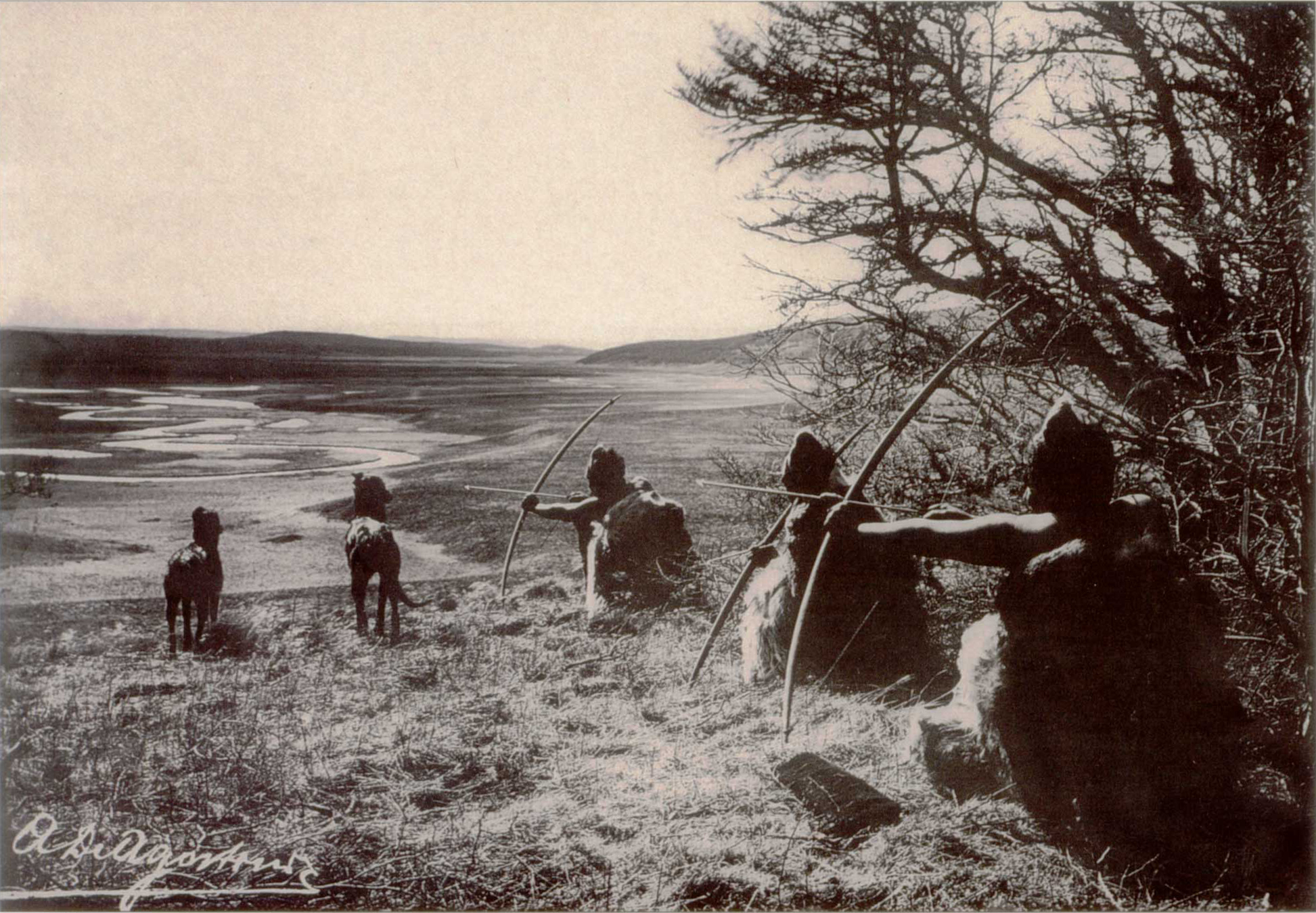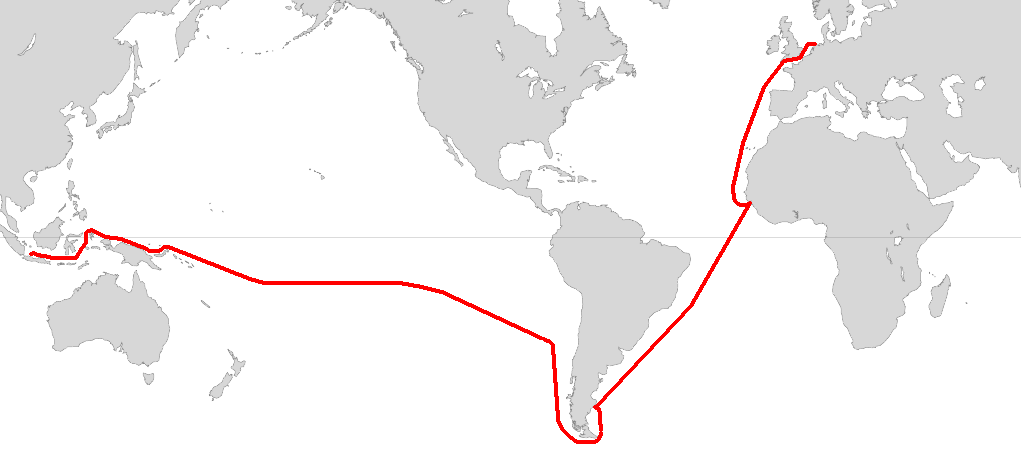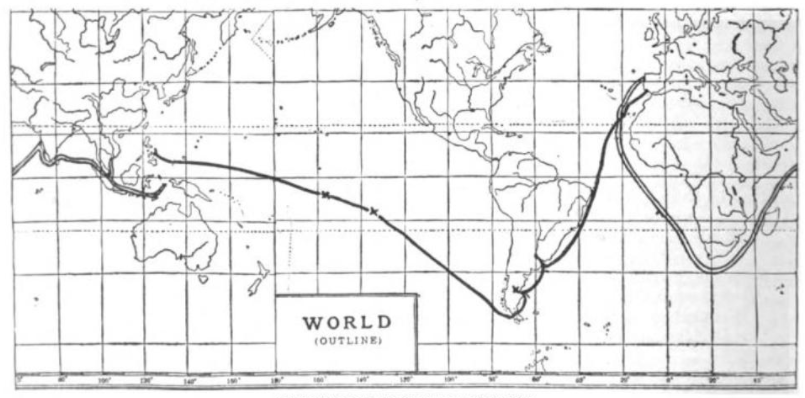|
Patagon
The Patagons or Patagonian giants were a mythical race of giant humans rumoured to be living in Patagonia described in early European accounts. They were said to have exceeded at least double normal human height, with some accounts giving heights of or more. Tales of these people maintained a hold upon European conceptions of the region for nearly 300 years. History The first mention of these people came from the voyage of Ferdinand Magellan and his crew, who claimed to have seen them while exploring the coastline of South America en route to the Maluku Islands in their circumnavigation of the world in the 1520s. Antonio Pigafetta, one of the expedition's few survivors and the chronicler of Magellan's expedition, wrote in his account about their encounter with natives twice a normal person's height: Pigafetta also recorded that Magellan had bestowed on these people the name "Patagão" (i.e. "Patagon", or ''Patagoni'' in Pigafetta's Italian plural), but he did not further el ... [...More Info...] [...Related Items...] OR: [Wikipedia] [Google] [Baidu] |
Patagonia
Patagonia () is a geographical region that includes parts of Argentina and Chile at the southern end of South America. The region includes the southern section of the Andes mountain chain with lakes, fjords, temperate rainforests, and glaciers in the west and Patagonian Desert, deserts, Plateaus, tablelands, and steppes to the east. Patagonia is bounded by the Pacific Ocean on the west, the Atlantic Ocean to the east, and many bodies of water that connect them, such as the Strait of Magellan, the Beagle Channel, and the Drake Passage to the south. The northern limit of the region is not precisely defined; the Colorado River, Argentina, Colorado and Barrancas River, Barrancas rivers, which run from the Andes to the Atlantic, are commonly considered the northern limit of Argentine Patagonia. The archipelago of Tierra del Fuego is sometimes considered part of Patagonia. Most geographers and historians locate the northern limit of Chilean Patagonia at Huincul Fault, in Araucanía R ... [...More Info...] [...Related Items...] OR: [Wikipedia] [Google] [Baidu] |
Selkʼnam People
The Selkʼnam, also known as the Onawo or Ona people, are an Indigenous peoples of the Americas, Indigenous people in the Patagonian region of southern Argentina and Chile, including the Tierra del Fuego islands. They were one of the last native groups in South America to be encountered by migrant Europeans in the late 19th century. Settlement, gold mining and farming in the region of Tierra del Fuego were followed by the Selknam genocide. In the mid-19th century, there were about 4,000 Selkʼnam; in 1916 Charles W. Furlong estimated there were about 800 Selkʼnam living in Tierra del Fuego; with Walter Gardini stating that by 1919 there were 279, and by 1930 just over 100. In the 2017 Chilean census 1,144 people declared themselves to be Selkʼnam. However, until 2020, they were considered extinct as a people by the government in Chile, and much of the English language literature. While the Selkʼnam are closely associated with living in the northeastern area of Tierra del ... [...More Info...] [...Related Items...] OR: [Wikipedia] [Google] [Baidu] |
Tierra Del Fuego
Tierra del Fuego (, ; Spanish for "Land of Fire", rarely also Fireland in English) is an archipelago off the southernmost tip of the South America, South American mainland, across the Strait of Magellan. The archipelago consists of the main island, Isla Grande de Tierra del Fuego, with an area of , along with numerous smaller islands, including Cape Horn and Diego Ramírez Islands. The western part of the Tierra del Fuego archipelago, about two-thirds including its many islands, is part of Chile, and the eastern part is part of Argentina. The southernmost extent of the archipelago, Cape Horn, lies just north of latitude 56th parallel south, 56°S. The earliest-known human settlement in Tierra del Fuego dates to approximately 8,000 BC. Europeans first explored the islands during Ferdinand Magellan's expedition of 1520. ''Tierra del Fuego'' ("Land of Fire") and similar names stem from sightings of the many fires that the inhabitants built along the coastline and possibly even in ... [...More Info...] [...Related Items...] OR: [Wikipedia] [Google] [Baidu] |
Puerto Deseado
Puerto Deseado, originally called Port Desire, is a city of about 15,000 inhabitants and a fishing port in Patagonia in Santa Cruz Province of Argentina, on the estuary of the Deseado River. It was named ''Port Desire'' by the privateer Thomas Cavendish in 1586 after the name of his ship, and later became known by the Spanish translation of the name. Today, the straggly town has a couple of pleasant squares, a former railway station and two museums, one with a collection of indigenous artifacts and one at the seafront with relics from the sloop of war HMS ''Swift'' which sank in 1770, recovered after its wreck was discovered in the port in 1982. The coast boasts spectacular scenery and colonies of marine wildlife close to the town. History The harbour, nearly long, was discovered in 1520 during the first circumnavigation of the world by the Magellan-Elcano Spanish expedition. Other Spanish expeditions followed, including the Loaísa expedition (1525) or the Pedro Sarmiento ... [...More Info...] [...Related Items...] OR: [Wikipedia] [Google] [Baidu] |
John Byron
Vice-Admiral John Byron (8 November 1723 – 1 April 1786) was a British Royal Navy officer and explorer. He earned the nickname "Foul-Weather Jack" in the press because of his frequent encounters with bad weather at sea. As a midshipman, he sailed in the squadron under George Anson on his voyage around the world, though Byron's ship, HMS ''Wager'', made it only to southern Chile, where it was wrecked. He returned to England with the captain of the ship. He was governor of Newfoundland following Hugh Palliser, who left in 1768. He circumnavigated the world as a commodore with his own squadron in 1764–1766. He fought in battles in the Seven Years' War and the American Revolution. He rose to Vice Admiral of the White before his death in 1786. His grandsons include the poet Lord Byron and George Anson Byron, admiral and explorer, who were the 6th and 7th Baron Byron, respectively. One of his great-granddaughters was the mathematician and informatics pioneer Ada Lovelace. Earl ... [...More Info...] [...Related Items...] OR: [Wikipedia] [Google] [Baidu] |
Willem Schouten
Willem Cornelisz Schouten (1625) was a Dutch navigator for the Dutch East India Company. He was the first to sail the Cape Horn route to the Pacific Ocean. Biography Willem Cornelisz Schouten was born around 1567 in Hoorn, Holland, Seventeen Provinces. In April 1601 Willem Schouten was skipper of the Duyfken in the 'Moluccan fleet' of Wolfert Hermansz, and participated in the Battle of Bantam. On 1 July 1615 Willem Schouten and his younger brother Jan Schouten sailed from Texel in the Netherlands, in an expedition led by Jacob Le Maire and sponsored by Isaac Le Maire and his in equal shares with Schouten. The expedition consisted of two ships: ''Eendracht'' and ''Hoorn''.Quanchi, ''Historical Dictionary of the Discovery and Exploration of the Pacific Islands'', pp. 222–33 A main purpose of the voyage was to search for . A further objective was to explore a western route to the Pacific Ocean to evade the trade restrictions of the Dutch East India Company (VOC) i ... [...More Info...] [...Related Items...] OR: [Wikipedia] [Google] [Baidu] |
Ferdinand Magellan
Ferdinand Magellan ( – 27 April 1521) was a Portuguese explorer best known for having planned and led the 1519–22 Spanish expedition to the East Indies. During this expedition, he also discovered the Strait of Magellan, allowing his fleet to pass from the Atlantic into the Pacific Ocean and perform the first European navigation to Asia via the Pacific. Magellan was killed in battle in the Philippines and his crew, commanded by the Spanish Juan Sebastián Elcano, completed the return trip to Spain in 1522 achieving the first circumnavigation of Earth in history. Born around 1480 into a family of minor Portuguese nobility, Magellan became a skilled sailor and naval officer in service of the Portuguese Crown in Asia. King Manuel I refused to support Magellan's plan to reach the Moluccas, or Spice Islands, by sailing westwards around the American continent. Magellan then proposed the same plan to King Charles I of Spain, who approved it. In Seville, he married, fathere ... [...More Info...] [...Related Items...] OR: [Wikipedia] [Google] [Baidu] |
Sebald De Weert
Sebald or Sebald de Weert (May 2, 1567 – May 30 or June 1603) was a Flemish captain and vice-admiral of the Dutch East India Company (known in Dutch as ''Vereenigde Oost-Indische Compagnie'', VOC). He is most widely remembered for accurately plotting the Falkland Islands in 1600. Early life Sebald de Weert was born in Antwerp, the sixth of 17 children of Johannes Sweerts de Weert (b. 1538) and Clara Wonderer (1541–1595). The family left Antwerp for Cologne in January 1569, to escape the tyranny and persecution. In 1575, the family moved to Amsterdam. Between 1579 and 1584, they were back in Antwerp, and by 1586, they lived in Middelburg. Sebald was originally employed as a ship's navigator with the Dutch East India Company (VOC), and over the years worked his way up to vice admiral with the VOC. He signed his name "Sebalt", but had the official Latinized name "Sebaldus". Expedition to the East Indies via the Straits of Magellan Crossing the Atlantic Around 1598, seve ... [...More Info...] [...Related Items...] OR: [Wikipedia] [Google] [Baidu] |
Conquistador
Conquistadors (, ) or conquistadores (; ; ) were Spanish Empire, Spanish and Portuguese Empire, Portuguese colonizers who explored, traded with and colonized parts of the Americas, Africa, Oceania and Asia during the Age of Discovery. Sailing beyond the Iberian Peninsula, they established numerous Colony, colonies and trade routes, and brought much of the "New World" under the dominion of Spain and Portugal. After Christopher Columbus's arrival in the West Indies in 1492, the Spanish, usually led by Hidalgo (nobility), hidalgos from the west and south of Spain, began building a colonial empire in the Caribbean using colonies such as Captaincy General of Santo Domingo, Santo Domingo, Captaincy General of Cuba, Cuba, and Captaincy General of Puerto Rico, Puerto Rico as their main bases. From 1519 to 1521, Hernán Cortés led the Spanish conquest of the Aztec Empire, ruled by Moctezuma II. From the territories of the Aztec Empire, conquistadors expanded Spanish rule to northern Ce ... [...More Info...] [...Related Items...] OR: [Wikipedia] [Google] [Baidu] |
Francis Drake
Sir Francis Drake ( 1540 – 28 January 1596) was an English Exploration, explorer and privateer best known for making the Francis Drake's circumnavigation, second circumnavigation of the world in a single expedition between 1577 and 1580 (being the first English expedition to accomplish this). He is also known for participating in the early English slaving voyages of his cousin, John_Hawkins_(naval_commander), John Hawkins, and John_Lovell_(slave_trader), John Lovell. Having started as a simple seaman, in 1588 he was part of the fight against the Spanish Armada as a vice admiral. At an early age, Drake was placed into the household of a relative, William Hawkins (died c. 1554), William Hawkins, a prominent sea captain in Plymouth. In 1572, he set sail on his Francis Drake's expedition of 1572–1573, first independent mission, privateering along the Spanish Main. Drake's circumnavigation began on 15 December 1577. He crossed the Pacific Ocean, until then an area of exclusive ... [...More Info...] [...Related Items...] OR: [Wikipedia] [Google] [Baidu] |
Hoax
A hoax (plural: hoaxes) is a widely publicised falsehood created to deceive its audience with false and often astonishing information, with the either malicious or humorous intent of causing shock and interest in as many people as possible. Some hoaxers intend to eventually unmask their representations as having been a hoax so as to expose their victims as fools; seeking some form of profit, other hoaxers hope to maintain the hoax indefinitely, so that it is only when skeptical people willing to investigate their claims publish their findings, that the hoaxers are finally revealed as such. History Zhang Yingyu's '' The Book of Swindles'' ( 1617), published during the late Ming dynasty, is said to be China's first collection of stories about fraud, swindles, hoaxes, and other forms of deception. Although practical jokes have likely existed for thousands of years, one of the earliest recorded hoaxes in Western history was the drummer of Tedworth in 1661. The communication of ... [...More Info...] [...Related Items...] OR: [Wikipedia] [Google] [Baidu] |
Jacob Le Maire
Jacob Le Maire (c. 1585 – 22 December 1616) was a Dutch mariner who circumnavigated the Earth in 1615 and 1616. The strait between Tierra del Fuego and Isla de los Estados was named the Le Maire Strait in his honour, though not without controversy. It was Le Maire himself who proposed to the council aboard ''Eendracht'' that the new passage should be called by his name and the council unanimously agreed with Le Maire. The author or authors of ''The Relation'' took ''Eendracht'' captain Willem Schouten's side by proclaiming: :“ ... our men had each of them three cups of wine in signe of ioy for our good hap ... nd the naming ofthe ''Straights of Le Maire'', although by good right it should rather have been called ''Willem Schouten Straight'', after our Masters Name, by whose wise conduction and skill in sayling, the same was found.”. ''Eendracht'' then rounded Cape Horn, proving that Tierra del Fuego was not a continent. Biography Jacob Le Maire was born in either Antwer ... [...More Info...] [...Related Items...] OR: [Wikipedia] [Google] [Baidu] |











